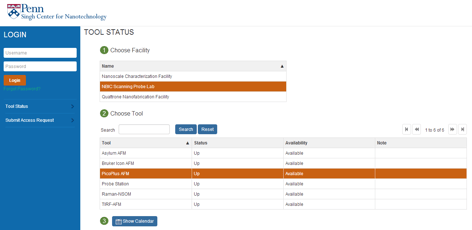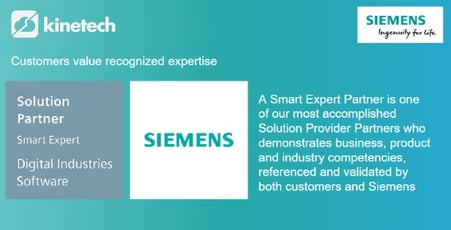In 1918, an influenza virus developed several mutations that resulted in one of the deadliest pandemics in history: the Spanish Flu. Over the course of two years an estimated 500 million people died, more than both world wars combined. Now, nearly a century later, the threat of a new global pandemic is still a chief concerns of today’s society. Although a global pandemic like the Spanish Flu has not been seen in decades, smaller epidemics like Swine Flu and Ebola continue to grip the world with fear. But this is not 1918. Despite the fact that the flu vaccine today is still only 50-60% effective, we are much better prepared to deal with an outbreak. This is largely due to the phenomenon known broadly as digital innovation.
Digital innovation refers to the development and application of technology to address existing problems. This is a trend affecting all industries, from healthcare to industrials to finance. For disease prevention, it means predictive analytics to reduce the possibility of a pandemic, and faster response in the event of an outbreak. The trend of preventative rather than reactionary care has a long runway and the implications are far reaching.
At Kinetech, we are developing a software application that helps large companies and corporations keep track of their employees’ health and activity. Not only does this create a system by which companies are actively encouraging a healthier workforce, it also has tangible benefits to their bottom line. Intuitively, active people tend to have fewer insurance billables, and therefore are less expensive to insure. Many large companies pay for their employees’ health insurance, which is a huge burden when you have hundreds or thousands of employees. A company that demonstrates improving health amongst its workforce (more activity, lower weight, lower cholesterol, etc.) can reduce the premium it pays for insurance and generate substantial savings; not to mention the higher productivity that comes with a healthier workforce.
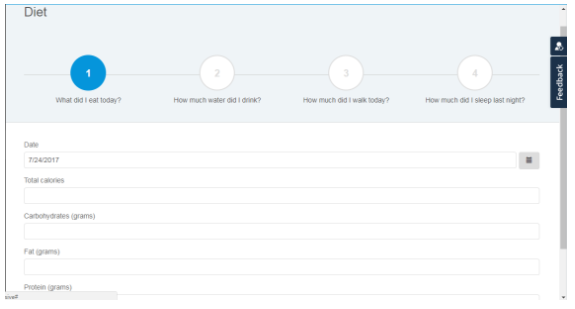 Our streamlined process makes tracking health data easy.
Our streamlined process makes tracking health data easy.
But how do you prove to an insurance company that your workforce is getting healthier? Moreover, how do you encourage your employees to take the necessary steps to be healthy? The reality is, a corporate environment is generally antithetical to workforce health on a variety of metrics. Fast-moving companies demand long hours, high stress, encourage low levels of movement and activity, and make unhealthy eating easy. Lowering insurance premiums will require a drastic change in how companies operate.
Enter the Kinetech Workforce Health Solution (KWHS). The idea is simple: incentivize your workforce to opt-in, de-identify the data collected from fitness trackers, schedule routine health screenings, and aggregate the results in an easy-to-read dashboard. Keeping everything together allows employees to look at health data as an interconnected web of information, rather than discrete points like diet, exercise, and sleep.
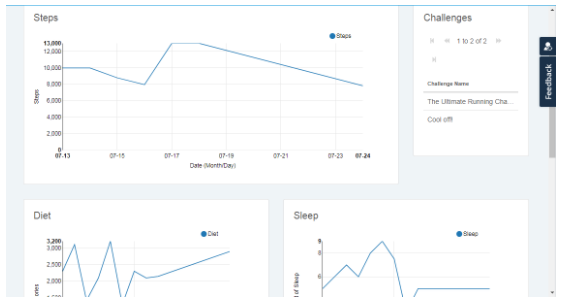 Dashboard diplaying health data
Dashboard diplaying health data
But it doesn’t end there. Gamification is important for buy-in. Employees must feel like they have a reason to participate in the app and open it on a daily basis. The problem is, if much of this data already exists in apps today (albeit in disparate locations), employees are not really incentivized to open our solution and use it. There has to be something else, some other reason for an employee to say, “I’m going to enter all of my data into my computer today.” For KWHS, that means Challenges.
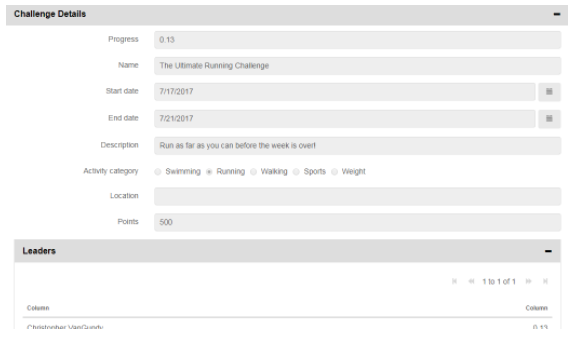 Challenges encourage participation and healthy competition
Challenges encourage participation and healthy competition
The concept of challenges is pretty simple. Employees join company-created challenges either individually or as part of a team. These challenges are designed to make participants healthier in some way. For instance, a challenge could be “Walk ten thousand steps every day this week,” or “Stay under your daily calorie goal for the whole month.” Participation and progress in these challenges generate badges and points, which can then be used for bragging rights and prizes. In this way, employees are incentivized both to use the app and to be more active. This points to a more basic truth about humans: we love games, and we love to compete. So what better way to encourage people to be healthier than by making health a competition? It’s a win-win. Employees are able to voluntarily participate in as many or as few challenges as they want, and companies ultimately will be able to concretely prove that their workforce is getting healthier and will thus reduce insurance premiums.
This would have been prohibitively expensive to implement just thirty years ago. It seems simple from a technological perspective. Employees and fitness trackers securely share data daily with the application, and the software aggregates and displays changes and trends in health metrics in both an individual and throughout a whole company. But the technology requires that dozens, in some cases even hundreds or thousands, of employees can input various data into a single portal, which is then processed and analyzed via a cloud-based server to report data on workforce health trends. This is no easy feat, especially because the idea of “cloud” technology, that is, storing data on the internet instead of on a physical hard drive, is only about a decade or so old. Something that was once cost prohibitive and technologically limited is now becoming a reality. This is the power of digital innovation. Through the use of the internet, we are building a solution that can improve people’s health and bring about a shift in the way companies view the health of their employees.
Of course, cloud computing and other similar digital innovations are still in their infancy, and we can only guess at what the future holds. But I see a world, not far in the future, where disasters are more easily averted and the few that slip through the cracks are quickly remedied. I see a world that empowers business and individuals to help themselves while working to reduce inefficiency in our world. This is what Kinetech is doing, not just with KWHS but with all of our applications. We help our clients leverage custom cloud-based software solutions to cut costs, automate repetitive processes , and provide new goods and services. We are on the forefront of digital innovation and we continue to push the envelope of what can be accomplished in the cloud to provide real world benefit to corporations and individuals alike.
.png?width=246&height=70&name=Kinetech%20PM%20246%20x%2070%20(1).png)
-1.jpg?height=230&name=thisisengineering-raeng-ZPeXrWxOjRQ-unsplash%20(2)-1.jpg)
.png?height=60&name=image%20(87).png)
